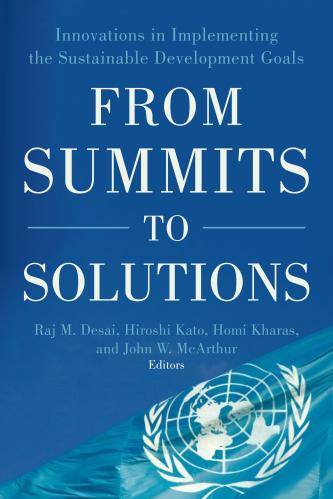Editor’s note: This blog is adapted from ‘Enhancing Statistical Capacity for Development,’ the author’s chapter in a new Brookings Press book, “From Summits to Solutions: Innovations in Implementing the Sustainable Development Goals.”
The Sustainable Development Goals seek to level the playing field for millions—economically, socially, ethnically, religiously, linguistically, or physically. These goals have put pressure on the need for fundamental and high-quality official statistics. Yet developing country statistical capacities are underfunded and lack capacity to meet demands for data.
For over three decades, the Japan International Cooperation Agency (JICA) has provided advisory services to developing countries for capacity development in data collation and statistics. Starting with support for Indonesia’s population census in the early 1980s, JICA has gone on to assist Mexico, Sri Lanka, Argentina, Tanzania, Myanmar, Cambodia, Egypt, and Nepal.
Our chapter in “From Summits to Solutions” analyzes the status of statistical capacity development in developing countries and provides a case study of a capacity development project done by JICA in Cambodia. We also identify some gaps in official statistics in developing countries and present some ideas to simplify the work of national statistical agencies.
Use of administrative data, the internet, and Big Data are among those methods that may provide solutions for closing the gaps in official statistics and statistical capacity development. However, it is an enhanced core capacity that will make use of these technical innovations and be a driver for producing results. In other words, it is not merely information technology and Big Data that produce results, but rather it is through a hands-on approach, joint activities, and trial and error that we can accumulate specific achievements and contribute to the SDGs.




Commentary
Developing statistical capacity in low-income countries
August 8, 2018